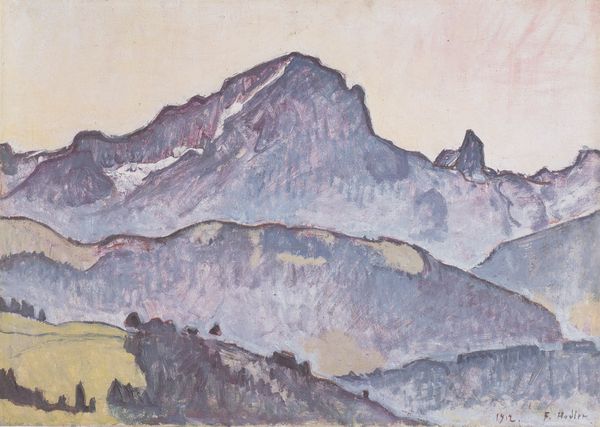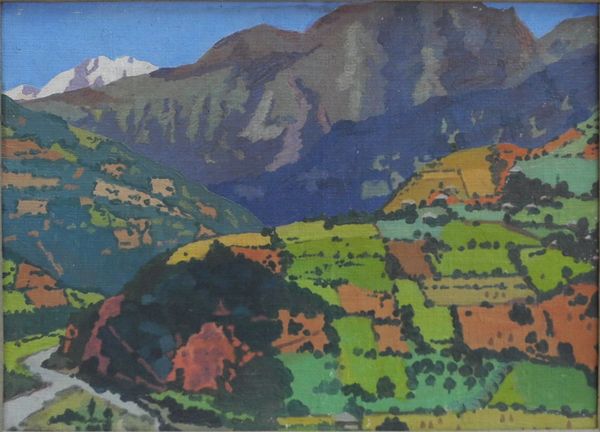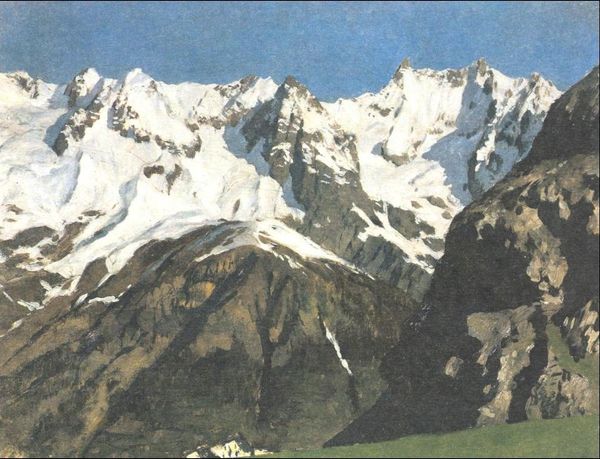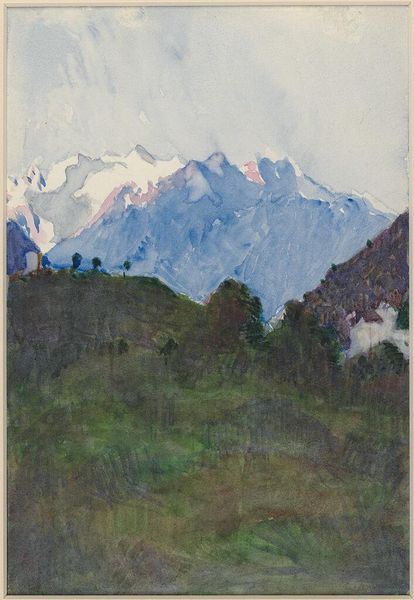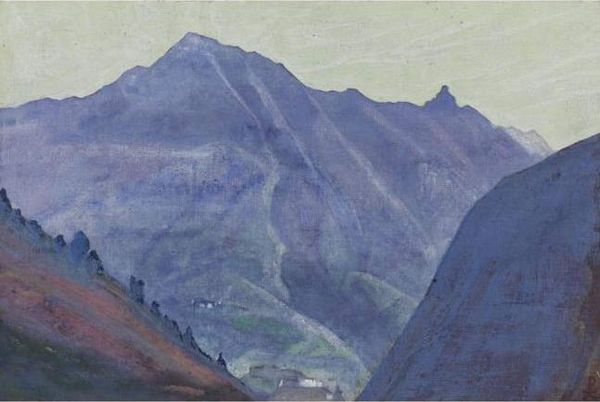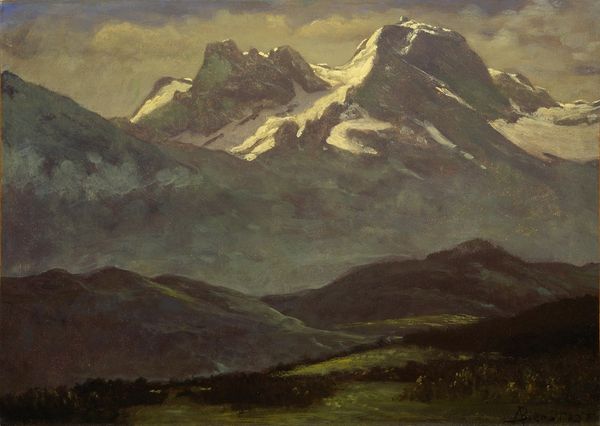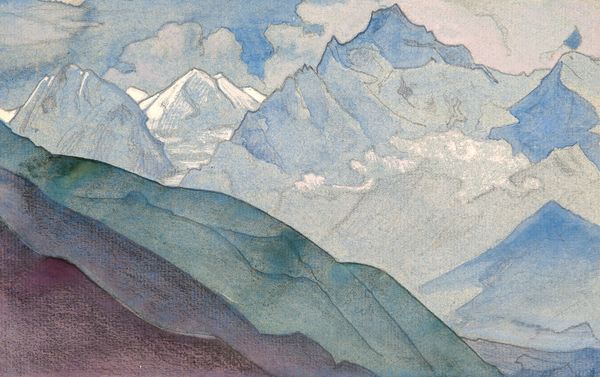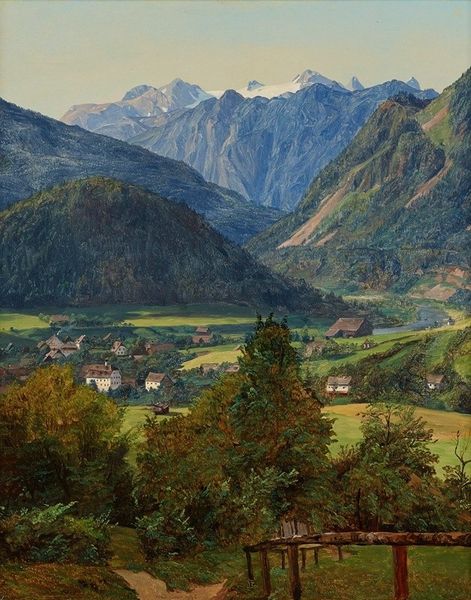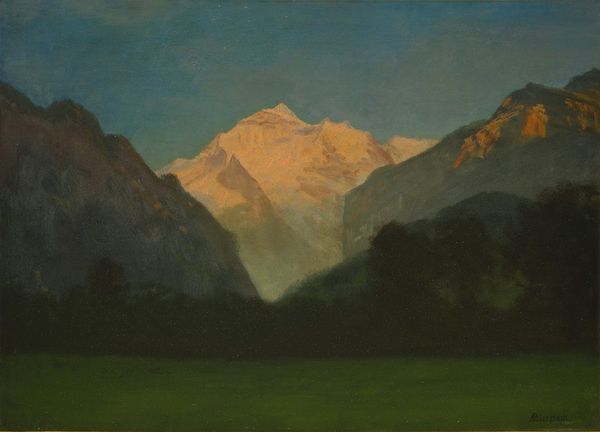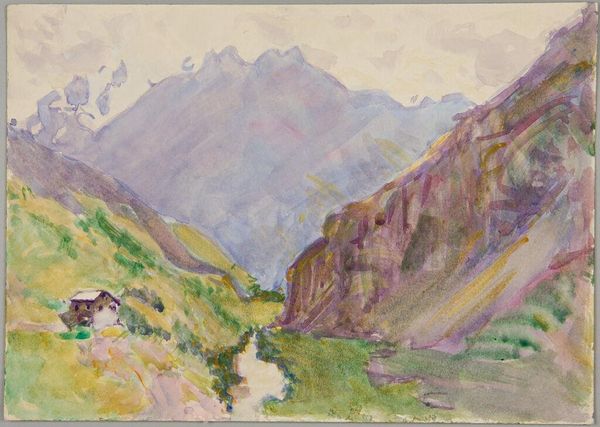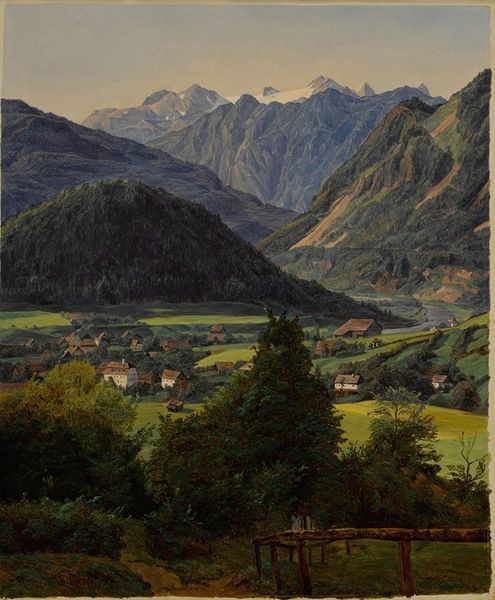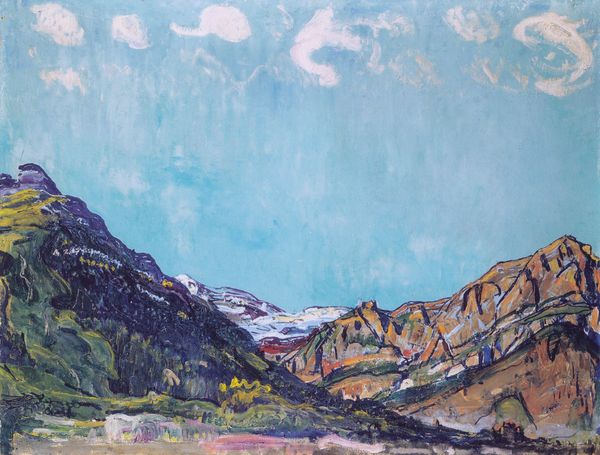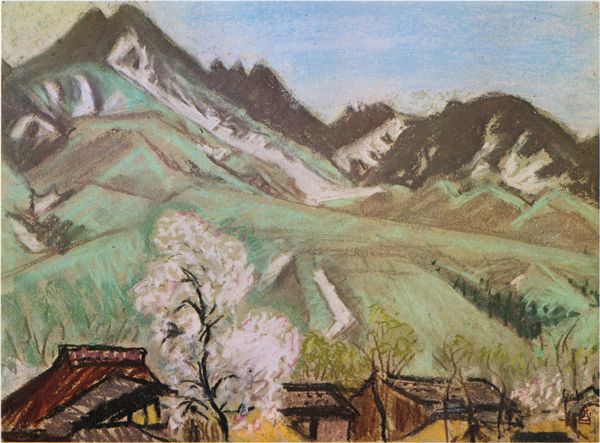
painting, oil-paint
#
painting
#
oil-paint
#
landscape
#
oil painting
#
geometric
#
mountain
#
expressionism
Copyright: Public domain US
Editor: Here we have David Kakabadze's "Imereti," painted in 1915 using oil paints. The mountain landscape is striking; the colors are so vivid and the paint is thickly applied. What draws your eye in this piece? Curator: The materiality of the paint itself. Kakabadze wasn't just depicting Imereti; he was constructing it with visible layers of oil. Look at the texture—how the impasto technique almost transforms the mountain into a tangible, sculptural form. Consider where Kakabadze sourced his materials, how that affected the painting process. This focus highlights labor, both the artist’s and the land’s. Editor: So you see the paint not just as color, but as a physical building block, connected to place and effort? Curator: Exactly! The brushstrokes aren't just representational; they’re records of action, of labor. How did Kakabadze's access to pigments or brushes in 1915 Imereti shape this artwork? This exploration leads to a deeper appreciation. And how did this landscape play into local economy? This work seems tied to both geography and economics. Editor: That makes me rethink how I see landscapes. I usually just think about the beauty of nature. Curator: Landscapes are never neutral; they're shaped by human intervention. Kakabadze’s bold textures remind us of the labor—both visible and invisible—embedded in our perception of landscape. What about the cultural implications? Who got to access or purchase works like this? Who owned the resources in the image? Editor: I didn’t even consider who had access. Curator: Exploring the economic dimensions of art can really deepen our understanding, don’t you think? Editor: Definitely. Seeing art this way, as connected to the means of its making and its societal context, is something I need to keep in mind going forward. Thanks!
Comments
No comments
Be the first to comment and join the conversation on the ultimate creative platform.

